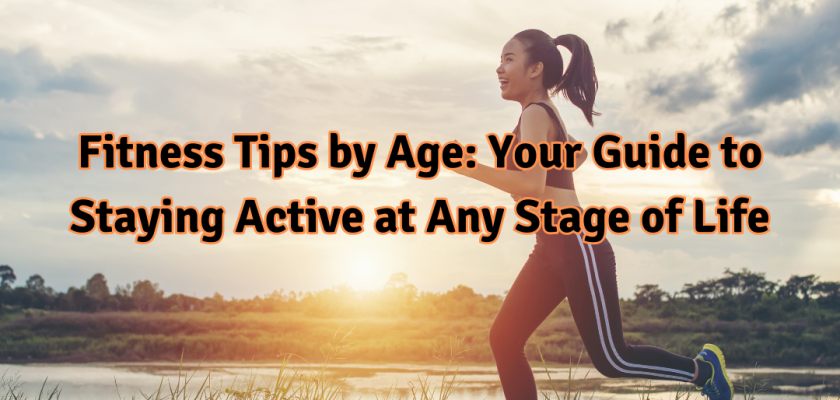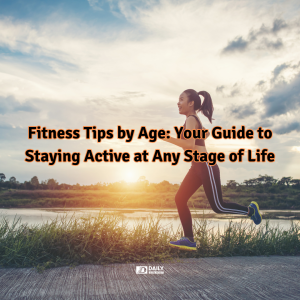Introduction:
Staying active is essential for maintaining good health and well-being at every stage of life. However, the type and intensity of exercise that’s best for you can change as you age. Age-appropriate exercise advice is provided in this guide to help you maintain an active, safe, and healthy lifestyle.
Childhood and Adolescence (5-18 Years)
Fitness Focus: Building a Foundation
During childhood and adolescence, it’s crucial to develop a solid foundation for lifelong fitness. The key goals at this stage are to promote physical activity, build strength and coordination, and instill a love for exercise.
Tips:
Encourage Play:
Children should engage in at least 60 minutes of physical activity daily. Activities should be fun and varied, including sports, playground games, and outdoor adventures.
Develop Motor Skills:
Focus on exercises that enhance coordination and motor skills, such as jumping, running, and balancing. Sports like soccer, basketball, and gymnastics are excellent choices.
Strength Training:
While heavy weightlifting is not recommended, body-weight exercises like push-ups, squats, and lunges can help build strength safely.
Flexibility:
Incorporate stretching exercises to improve flexibility, such as yoga or simple dynamic stretches before and after activities.
Healthy Habits:
Encourage healthy lifestyle habits, including regular physical activity, proper nutrition, and adequate sleep.
Young Adulthood (19-35 Years)
Fitness Focus: Maximizing Performance and Building Strength
In young adulthood, individuals have the highest potential for physical performance. The focus should be on building and maintaining strength, endurance, and overall fitness.
Tips:
Cardiovascular Exercise:
Every week, try to get in at least 120 minutes of moderate- or 75 minutes of high-intensity cardio. Swimming, cycling, and running are great choices.
Strength Training:
Make sure to work out your strength at least twice a week. Focus on major muscle groups using free weights, resistance bands, or weight machines.
Flexibility and Balance:
Incorporate stretching and balance exercises into your routine to prevent injuries and maintain flexibility. Yoga and Pilates are beneficial.
High-Intensity Interval Training (HIIT):
HIIT workouts are time-efficient and effective for building cardiovascular fitness and burning calories.
Active Lifestyle:
Beyond structured exercise, stay active throughout the day by taking the stairs, walking or biking to work, and participating in recreational sports.
Middle Adulthood (36-55 Years)
Fitness Focus: Maintaining Health and Preventing Injuries
In middle adulthood, the focus shifts to maintaining overall health, preventing injuries, and managing stress. Consistency in exercise becomes more important than intensity.
Tips:
Balanced Routine:
Combine cardiovascular exercise, strength training, and flexibility exercises for a well-rounded fitness routine. Aim for at least 150 minutes of moderate-intensity cardio per week and strength training twice a week.
Low-Impact Activities:
Consider low-impact exercises like swimming, cycling, and walking to reduce stress on joints.
Core Strength:
Strengthen core muscles to support the spine and improve posture. Pilates and yoga are excellent for core conditioning.
Functional Fitness:
Focus on exercises that mimic everyday movements, such as squats, lunges, and lifting. This helps maintain mobility and prevent injuries.
Stress Management:
Incorporate relaxation techniques like meditation, deep breathing, or gentle yoga to manage stress.
Late Adulthood (56-75 Years)
Fitness Focus: Enhancing Mobility and Maintaining Independence
In late adulthood, exercise is vital for maintaining mobility, balance, and overall health. The focus should be on activities that support daily functioning and prevent age-related decline.
Tips:
Aerobic Exercise:
Aim for at least 150 minutes of moderate-intensity aerobic activity each week. Walking, swimming, and dancing are excellent choices.
Strength Training:
For the purpose of preserving bone density and muscle mass, perform strength training activities at least twice a week. Focus on major muscle groups using light weights or resistance bands.
Balance and Stability:
Include balance exercises in your routine to prevent falls. Tai chi and specific balance training exercises can be very effective.
Flexibility:
Include stretches to keep your range of motion and flexibility. Gentle yoga or stretching routines can be beneficial.
Social Engagement:
Participate in group activities or classes to stay socially engaged and motivated.
Senior Years (76+ Years)
Fitness Focus: Staying Active and Preventing Frailty
In the senior years, the primary goals of fitness are to stay active, prevent frailty, and maintain independence. Exercise routines should be adapted to individual abilities and health conditions.
Tips:
Gentle Aerobic Activity:
Aim for regular, low-impact aerobic activities such as walking, water aerobics, or stationary cycling. Even short, frequent walks can be beneficial.
Strength and Resistance Training:
Engage in light strength training exercises to preserve muscle mass and strength. Resistance bands and light weights are excellent tools.
Balance Exercises:
Prioritize exercises that improve balance and coordination to reduce the risk of falls. Simple balance exercises, tai chi, or specific balance training can be helpful.
Flexibility and Range of Motion:
Incorporate gentle stretching exercises to maintain flexibility. Chair yoga or seated stretching routines can be suitable.
Adapt to Abilities:
Modify exercises to accommodate any physical limitations or health conditions.For individualized guidance, speak with a licensed trainer or a member of the medical community.
General Tips for All Ages
Regardless of age, there are some universal principles of fitness that apply to everyone:
Consistency is Key:
Regular physical activity is more important than occasional intense workouts. Aim to be active most days of the week.
Listen to Your Body:
Pay attention to how your body feels during and after exercise. Rest and recovery are essential components of a successful fitness routine.
Stay Hydrated:
Drink plenty of water before, during, and after exercise to stay hydrated.
Warm-Up and Cool Down:
Always start with a warm-up to prepare your body for exercise and finish with a cool-down to aid recovery and prevent injury.
Healthy Diet:
Combine regular exercise with a balanced diet rich in fruits, vegetables, lean proteins, and whole grains to support overall health and fitness.
Conclusion
Staying active at every stage of life is crucial for maintaining physical and mental health. By following age-appropriate fitness tips and adapting your exercise routine to your changing needs, you can enjoy the many benefits of an active lifestyle well into your senior years. Remember, it’s never too late to start exercising, and the best time to begin is now.


